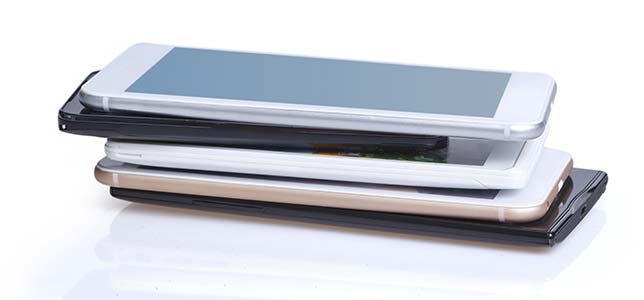Top 5 Phone Makers Improve as Overall Market Declines

Smartphone shipments declined slightly in the second quarter of 2017, down to 341.6 million, a decline of 1.3 percent compared to the same period last year and a 0.8 percent decline compared to this year's first quarter, according to a new report from International Data Corp. (IDC).
Though the industry saw a decline, the top vendors were more or less unaffected by the contraction, with Samsung and Apple holding about the same market share they did in the second quarter of 2016 and the other three top-five vendors — Huawei, OPPO and Xiaomi — all gaining share.
"In my opinion, the biggest change in the second quarter is the size of the contraction among the 'Others' outside of the top 5 original equipment manufacturers, said Ryan Reith, program vice president with IDC's Worldwide Quarterly Mobile Device Trackers, in a prepared statement. "It's no secret that the smartphone market is a very challenging segment for companies to maintain or grow share, especially as already low average selling prices declined by another 4.3 percent in 2016. The smaller, more localized vendors will continue to struggle, especially as the leading volume drivers build out their portfolio into new markets and price segments."
The company also predicts the third and fourth quarter of this year to show strong enough growth to make the whole of 2017 a growth year for smartphones. IDC predicts that Samsung's recent release of Galaxy S8 products and anticipated release of the Note 8, along with the expected release of the next round of iPhones, shipments should pick up in the back half of the year.
"Despite some key launches in the second quarter from some well-known players, all eyes will be on the ultra-high-end flagships set to arrive this fall," said Anthony Scarsella, research manager with IDC's Worldwide Quarterly Mobile Phone Tracker, in a prepared statement. "With devices like the iPhone 8, Pixel 2, Note 8 and V30 in the pipeline, the competition will be fierce come September. We expect all the key players to promote their latest and greatest flagships with an assortment of deals, bundles and trade-in offers across a variety of channels in most key markets."
Samsung was the market leader for the quarter, selling 79.8 million units for a 23.3-percent market share. That's up from 78.6 million during the same period last year, but the market share for that period was slightly lower, at 22.7 percent.
"Outside of the S8/S8+, Samsung continues to perform well at the mid-to-low end with its 'A' Series and 'J' Series devices," according to a news release. "Much like Apple, all eyes will be on the next big thing as the Note 8 will look to permanently erase all memories of the Note 7 debacle from last year."
Apple also saw an increase in shipments from last year's second quarter to this year's, improving from 40.4 million to 41 million, but saw a slight uptick in market share, improving from 11.7 percent to 12 percent.
"The iPhone continues to perform well at the high end as the 7 Plus outperformed the 6S Plus from one year ago," according to information released by IDC. "The iPhone 7 and 7 Plus combined delivered double-digit growth at a worldwide level, which helped grow average selling prices (ASPs) by 2 percent despite foreign exchange headwinds. All eyes will be on the iPhone 8 come September as Apple is expected to bring new features such as a larger AMOLED display, wireless charging and increased performance and durability. The all new model is supposed to join a new 7S, and 7S Plus come the fall."
Huawei, in third place, gained ground on Apple, improving from 32.2 million shipments and a share of 9.3 percent in the second quarter of 2016 to 38.5 million shipments and an 11.3-percent share in the most recent quarter.
OPPO's market share improved from 6.6 percent to 8.1 percent as devices sold rose from 22.7 million to 27.8 million.
Rounding out the top five, Xiaomi saw the fastest growth at 58.9 percent on the strength of sales soaring from 13.3 million in last year's second quarter to 21.2 million in this year's. Their market share improved from 3.9 to 6.2 percent between the two periods.
About the Author
Joshua Bolkan is contributing editor for Campus Technology, THE Journal and STEAM Universe. He can be reached at [email protected].